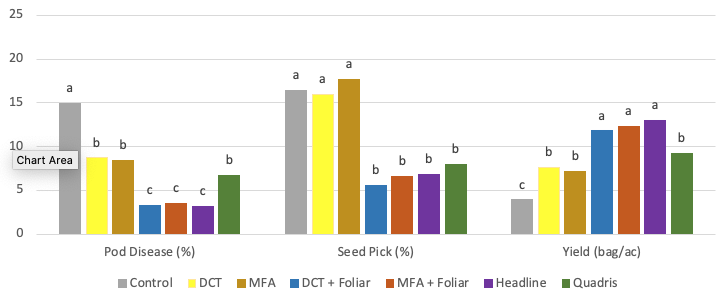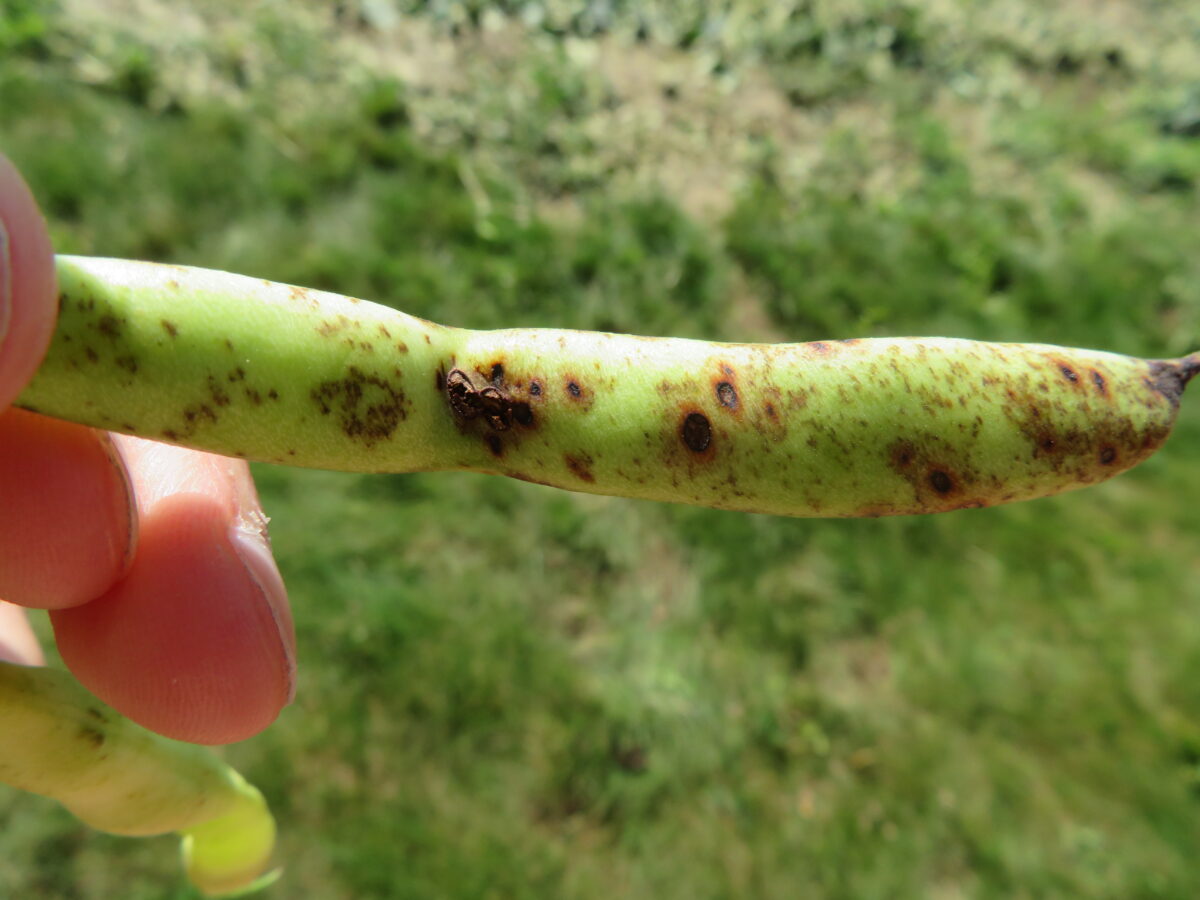Anthracnose is a seed borne disease that reduces yield and seed quality. Seed treatments provide the first chemical defence for this disease. DCT (diazinon + captan + thiophanate-methyl) was the standard seed treatment in Ontario. Earlier work found that DCT was better than Apron Maxx (fludioxonil + metalaxyl-m) in managing early season anthracnose infection on infected seed. The purpose of this study was to evaluate adding azoxystrobin to Apron Maxx seed treatment, and compare it to DCT, to manage anthracnose in a dry bean crop in Ontario.
A total of four studies were done at Exeter ON in 2007-2008. Anthracnose infected seed was treated with DCT (diazinon + captan + thiophanate-methyl) or MFA (metalaxyl-m + fludioxonil + azoxystrobin). Headline or Quadris were foliar applied at 1st flower + full flower. Kornoil concentrate (COC) was added to selected Quadris treatments, to measure the effect of a surfactant on fungicide performance. Leaf and pod infection (%), maturity, pick, seed weight and yield were measured. Disease pressure ranged from low to high across the sites.

Bars within a group with the same letter are not significantly different (P<0.05)
The addition of COC surfactant to Quadris increased yield (1 of 4 sites) and return on investment (2 of 4 sites) compared to Quadris applied alone (data not shown). MFA was similar to DCT under both low and high disease pressure and it is a suitable replacement for DCT seed treatment. A seed treatment alone had less pod disease than the control, but high pick and low yield at harvest. Adding a foliar fungicide to either seed treatment reduced pod disease and seed pick, and increased yield versus a seed treatment alone. Headline outperformed Quadris under high disease pressure, with less pod disease and higher yield. Quadris + COC was similar to Headline applied alone for disease severity and yield. Headline had higher return on investment than Quadris at all sites and higher returns than Quadris +COC at 2 of 4 sites (data not shown).
Originally published in Crop Protection 2012. Volume 45. Pages 21-28. Revised in July 2020 for drybeanagronomy.ca.
